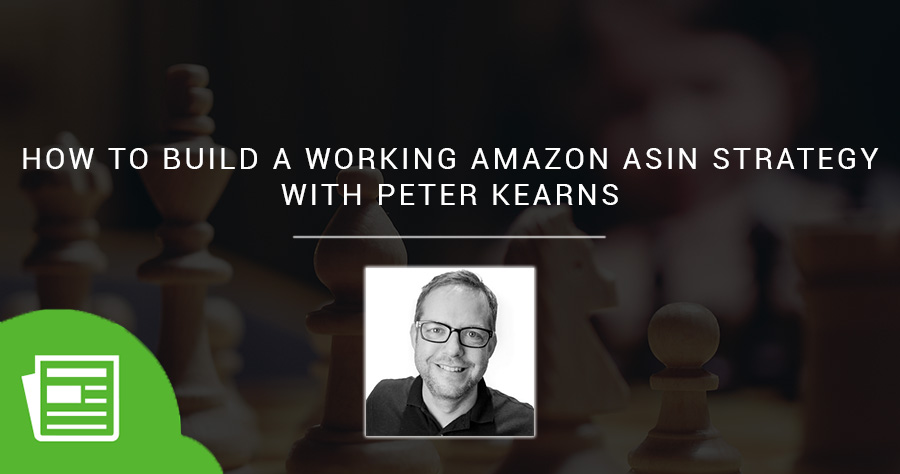This is a replay of our weekly Facebook Live event with Peter Kearns, former Amazonian and VP of Client Solutions at 180Commerce. We talk ASIN strategies and tools, and we take questions and provide answers.
Download Peter’s Slides >
Download the Business Report Example >
Hope is not a strategy, neither is managing inventory based on gut feelings about trends. Have you really dug into your numbers within your Business Reports? If so, are you doing it strategically and with consistency and goals in mind? If not, you’re managing your inventory in the dark and you’re wasting time on listings and you’re wasting money on inventory.
Every Amazon seller, even the very top earners, has room for improvement. That’s why optimization is so important. Before you can optimize, you need to know what parts of your business need attention. Are you struggling with discovery, traffic, conversions, or reviews? If you don’t know for sure based on the data provided in Seller Central reports, you’re likely throwing money away by addressing the wrong issues. All of the Sponsored Products ad campaigns in the world will not solve your problems if your issue is conversions.
Three types of ASINs
In order to help you get a handle on what’s real and what matters, you need an ASIN strategy, one where you look at your catalog in a way where you can identify the head, the torso, and the tail components of your inventory.
- Head: Big sellers, the top 20% of listings driving 80% of revenue. High traffic, high conversion, high sales.
- Torso: Mid-performers that might be able to to be optimized in order to perform better.
- Tail: Stragglers with low conversions and earnings.
Isolate the three sections, by looking at the Detail Page Sales and Traffic by Child ASIN/Item Report within your Business Reports. Don’t just do it once. Once is just a snapshot. Do it consistently and regularly at least once a month for the last 30-90 days so you can see the bigger picture and trends. Remember that you’re making decisions based upon child variations rather than parent products. This will help you tighten up in a targeted manner rather than gambling on entire products.
When working with these reports, sort traffic/sessions in descending order. Mind your buy box percentage. If you own the brand, you want 99-100% win there. Then look at Unit Session Percentage. Hide other columns so you can get these columns next to each other and see relationships and rations.
What to do with an ASIN report
Set a baseline so you can understand changes and get in front of any child ASINs that could be costing you by eating into other variations or sitting in fulfillment centers collecting dust. Make it easy on yourself. Start by looking at items with at least 1000 sessions.
- For those where conversion is low (under 10%), you need to optimize your listings. Something in there is driving people away. Check your keywords in order to make sure that you aren’t attracting shoppers who are actually looking for another product (example: you sell coffee but you have espresso and machine in your keywords so you are getting shopped trying to buy espresso machines and going into your listing and bailing because it’s a bad match).
- For items with fewer than 1000 sessions but decent conversions, you’re seeing items where people buy when they land in the right place, but they need more help getting there. Try Sponsored Products advertising to get better discovery and increased traffic.
- For items with low sessions and low conversions, why are you continuing to stock these variations? More colors is not necessarily better. It can be costly to you and overwhelming to shoppers. Liquidate deadwood and tail variations by running promos. You’ll increase your sales velocity for the parent ASIN. Then, don’t restock when you sell out. You’ll make choosing easier for customers and you’ll save on inventory and storage. Yes, there is such a thing as too many items and too many choices.
Need personalize help? Peter does just that. Reach him at:
pk@180commerce.com
https://www.linkedin.com/in/peter-kearns-73930417/







